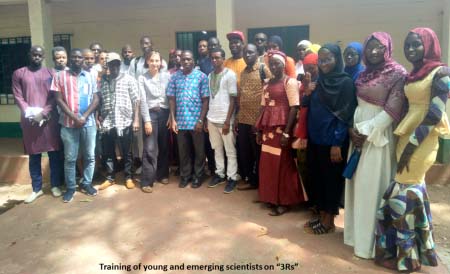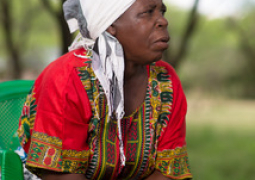
While accurate data to estimate the number of animals that are used globally for drug or cosmetic testing purposes may be elusive, there are indications that many animals are sacrificed for research that are meant to better the lives of human beings. For instance, Humane Society of the United States estimated the number of animals used on a yearly basis for research and education in the United States of America as 25 million (https://www.humanesociety.org/all-our-fights/taking-suffering-out-science). Elsewhere in the United Kingdom, the number of animal procedures carried out every year in biomedical research is estimated to be above 4 million (https://www.yourgenome.org/debates/should-animals-be-used-in-research). The most commonly used animals in such testing, experiments and scientific expedition are mice and rats. In addition to these two animals are rabbits, birds, guinea pigs, hamsters, dogs, cats, ferrets, primates, and also farm animals such as poultry, pigs and sheep.
The use of animals for either scientific, medical, or pharmaceutical purposes could be traced right back to the second century BC. The names of investigators that readily come to mind in this regard include Aristotle and Erasistratus, both of Greek origin. Much later in the 13th century was Ibn al-Nafis, a physician from the Arab region of Damascus (Syria), who made immense contributions to the fields of physiology and anatomy through dissection of animals and humans.
An important question that someone may wish to ask is: How much similarity is there between animals and human beings? There are divergent answers to this question but a more common notion among biological scientists include that of Charles Darwin, who in the 19th century attempted to make such comparisons and eventually remarked that “There is no fundamental difference between man and the higher mammals in their mental faculties”. This type of opinion and other closely related ones motivated the continued use of animals for research purposes and still does so to date. Even with the recent global outbreak of the new coronavirus (COVID-19), a news article featured in the Nature journal (www.nature.com/articles/d41586-020-00698-x) on the 9th March, 2020 revealed “How monkeys, mice and ferrets are helping scientists to fight coronavirus”. The article further indicated a short supply of some animals, in particular those that are transgenic, which could be used to study how infections develop under typical conditions.
Meanwhile, discussion on use of animals for research and to what extent their use by scientists can be considered humane is still a debatable issue. Proponents of animal use and testing usually offer defense such as:
- 70% of Nobel prizes for physiology or medicine were won with research on animals.
- Major discoveries which included organ transplantation and HIV treatment involved experiments with animals. Furthermore, medical research aimed at providing cure for cancer, Alzheimer’s disease, heart disease, etc. mainly requires animal testing.
- Certain national laws on clinical trials stipulate a need to test for safety of drugs on animals before they can be used on humans. Besides, it is difficult to find human volunteers that would allow drugs to be tested on them without such drugs being tested on animals first.
- Extreme care/attention is always given to animals that are used in experimentation or testing, just as when they are being treated by veterinarians.
- Total removal of animals from laboratories has a tendency to limit understanding of diseases with complex physiological processes and their treatments.
- Research on animals for the benefit of human beings are also beneficial to animals because humans share many physiological and biological features with animals.
- In many developed countries, there are strict regulations to ensure that animals used in testing or experimentation are treated humanely.
However, counter-arguments to animal testing include:
- No animal is perfectly the same as human beings and even minor differences can lead to drugs that were passed in animals to fail in humans.
- Animals used in experiments are treated inhumanely, or in some situations euthanized (killed humanely). If they are not killed during or after the study, such animals would have sustained injuries or damage that reduced their welfare and quality of life. In addition, it is not very common that animals used for experiments are integrated back to other unused animals.
- Human tissue, cell cultures, and mathematical models can be used alternatively in studying human diseases and response to treatment, instead of animals.
- More than used for research purposes, animals are carelessly killed by e.g. road accidents, poaching, and butchering.
From the foregoing discussion, it appears that in certain situations we may not completely rule out the use of animals in scientific research, drug testing, and other purposes. Thankfully, there are now a widely accepted set of principles that researchers, who unavoidably have to use animals in their exploration or experimentations must follow. These principles put forward by W.M.S. Russell and R.L. Burch in their book titled “The Principles of Humane Experimental Technique” which was published in 1959 are collectively called ‘Three Rs’. This concept represents ‘replacement, reduction and refinement’ (https://3rs.ccac.ca/en/about/three-rs.html). Hence,
Replacement is used to denote “methods which avoid or replace the use of animals in an area where animals would otherwise have been used”. From this concept, there is absolute replacement which refers to “replacing animals with inanimate systems, such as computer programs” and relative replacements which means “replacing more sentient animals, such as vertebrates, with animals that current expert peer advice and interpretation of scientific evidence indicate have a significantly lower potential for pain perception, such as some invertebrates”.
Reduction refers to “any strategy that will result in fewer animals being used to obtain sufficient data to answer the research question, or in maximizing information obtained per animal and thus potentially limiting or avoiding the subsequent use of additional animals, without compromising animal welfare.”
Refinement refers to “modification of husbandry or experimental procedures to minimize pain and distress, and to enhance the welfare of an animal used in science from the time it is born until its death.”
Since the initial proposition of ‘Three Rs’, the concept has gained much recognition in biomedical research. It is now a compulsory requirement that some investigators must spell out in their proposals to research ethic committees and funders concerning how they intend to address the issue of ‘Three Rs’. While awareness creation and compulsory implementation of ‘Three Rs’ are gaining ground in the Western world, much is yet to be achieved on this issue in the Global South. This is partly because there are comparatively less research activities, especially in the field of biomedicine where the use of animals is sometimes inevitable. Based on this background, we recently conducted a study in The Gambia between November 2019 and March 2020 to investigate the level of awareness and knowledge of the ‘Three Rs’ among students, junior and mid-level career scientists, who possibly work with laboratory and farm animals for research and teaching purposes.
It emerged that 83% of the 120 interviewees in this study were not familiar with the concept of ‘Three Rs’ and about 43% of these respondents are not aware of ethics relating to handling of animals. Interestingly, 75% of the respondents have not previously worked on laboratory animals but are aware that animals should be treated with care. Such knowledge of humane treatment of animals, especially the domestic animals and pet might were acquired mainly from sensitization on animal welfare. Organizations at the forefront of awareness and sensitization on animal welfare in the country include The Gambia College and University of The Gambia Animal Welfare Advocates Association, and the Gambia Horse & Donkey Trust. Fourteen percent of the respondents who claimed knowledge of the ‘Three Rs’ obtained this understanding either through training, study or participation in research. Meanwhile, the desire to gain more knowledge and training on this concept as indicated by 90% of the respondents who participated in the survey is high.
To summarize this discussion on the use of animals and how they should be appropriately handled, the following important pieces of advice from the American Veterinary Medical Association (www.avma.org) are also applicable to The Gambia and should be well considered by those who handle animals or may later do so for either scientific or production purposes:
- Animals must be provided with water, food, proper handling, health care, and an environment appropriate to their care and use, with thoughtful consideration for their species-typical biology and behavior.
- Animals should be cared for in ways that minimize fear, pain, stress, and suffering.
- Procedures related to animal housing, management, care, and use should be continuously evaluated, and when necessary refined or replaced.
- Conservation and management of animal populations should be humane, socially responsible, and scientifically prudent.
- Animals should be treated with respect and dignity throughout their lives and when necessary, provided with a humane death.
- The veterinary profession should continually strive to improve animal health and welfare through scientific research, education, collaboration, advocacy, and the development of legislation and regulations.
This piece was written by Olawale Olaniyan (ofolaniyan@hotmail.com; +2202878995). The Biomedical Research Education Trust, United Kingdom is duly acknowledged for supporting the survey reported in this article.
By: Olawale F. Olaniyan
Instructor School of Agriculture and environmental Sciences
University of The Gambia
P.O. Box 3530
Serrekunda, The Gambia




